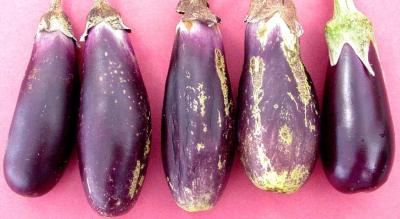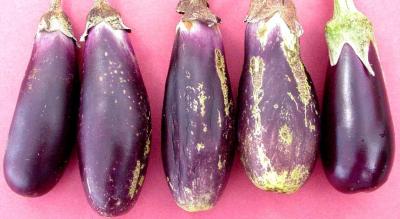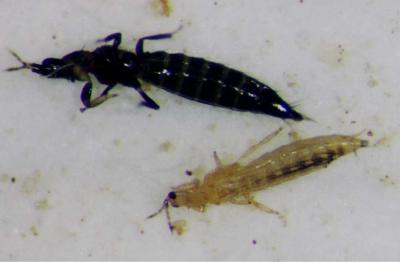


(Some species of Haplothrips are reported as pest in South Africa, we do not know if they are pests in Kenya or east Africa. Haplothrips are present in East Africa, but some of them are beneficial (predacious) and we do not know the status on the region. This will have to be reviewed when we finish with the datasheets). [br] When the status of Haplothrips in East Africa has been clarified we could decided if we leave this information on egg-laying habits. [br] Biological pesticides: check with list of Seif [br] FW: Include information on synthetic pesticides?
Thrips (Thrips spp and Frankliniella spp.)
Thrips are small (1.5 mm long), slender, brown insects with pale yellow hind wings that appear as a yellow line down the back of the body when the insect is at rest. Adult thrips have characteristic wings; the transparent wings have a fringe of hairs around the outside edge standing out in the same plane as the wing.
Thrips attack eggplant mostly during the dry season. They cause browning of leaves, especially on the lower leaf surface. In severe cases, the entire leaf dries. Thrips feeding on fruits causesscarring, irregular discolouration and deformation, which reduce the market value of fruits.
- Monitor the crop regularly for early detection of the pest and signs of infestation.
- Conserve natural enemies. Anthocorid bugs and predatory mites are important natural enemies of thrips. Avoid use of pesticides that kill natural enemies.
- Whenever necessary spray the crop with botanicals or other biopesticides. Some plant extracts (e.g. garlic, rotenone, neem, pyrethrum, and a mixture of garlic and pepper) are reported to control thrips. Spinosad, a bacterial derivative, is effective in controlling thrips.
